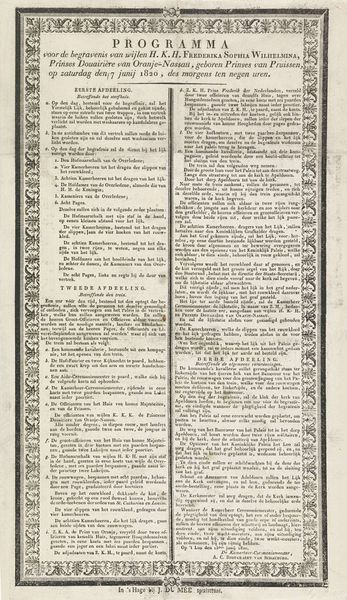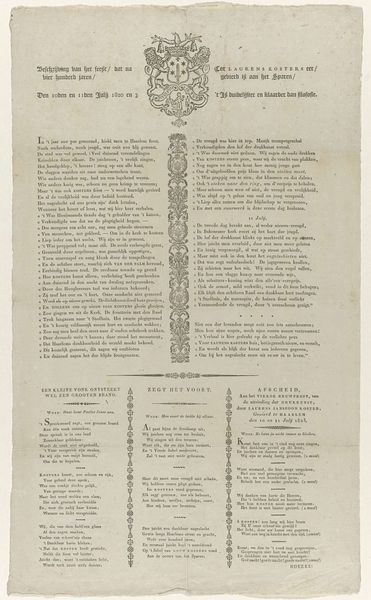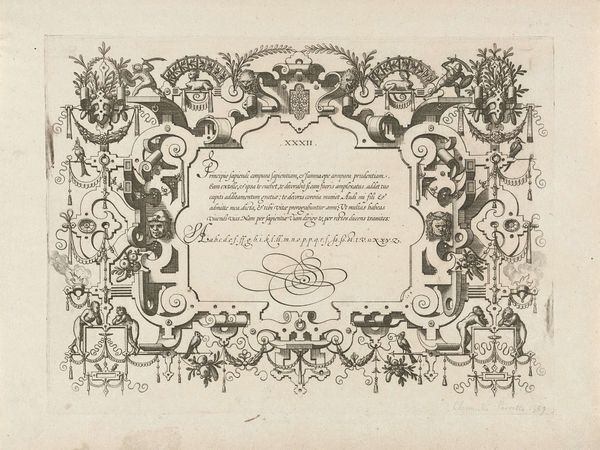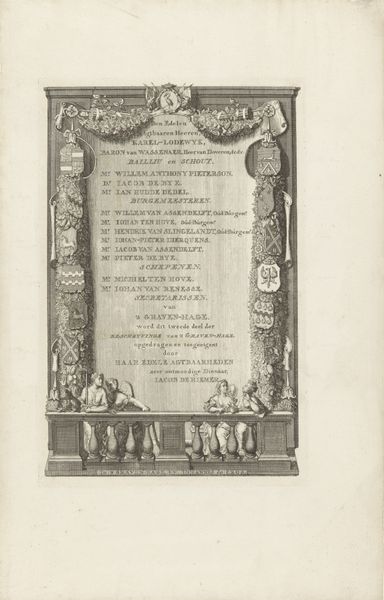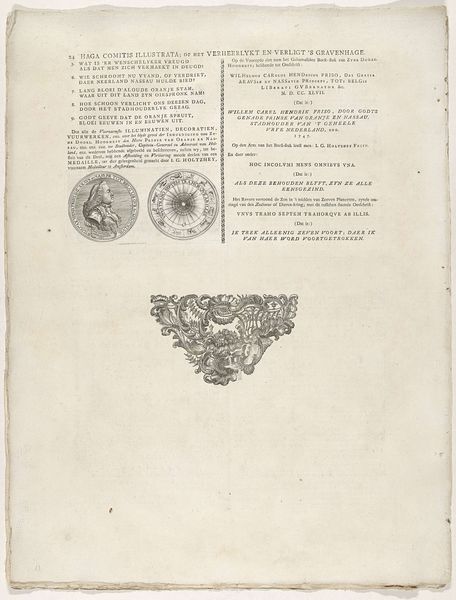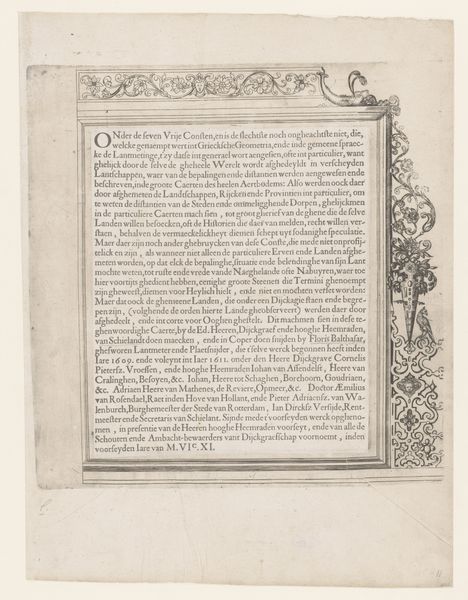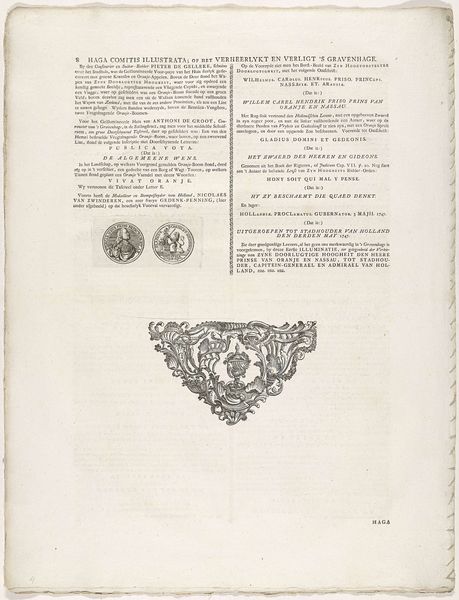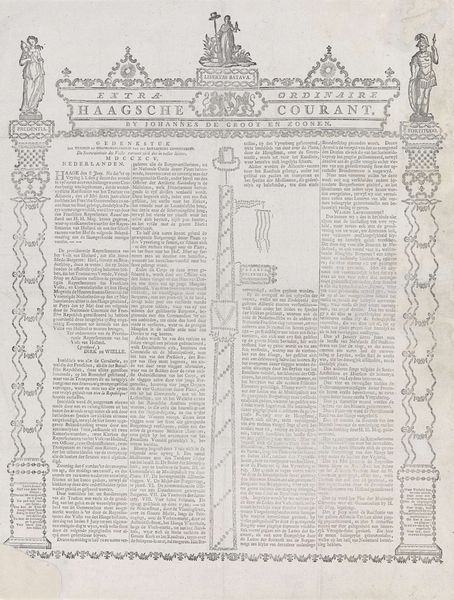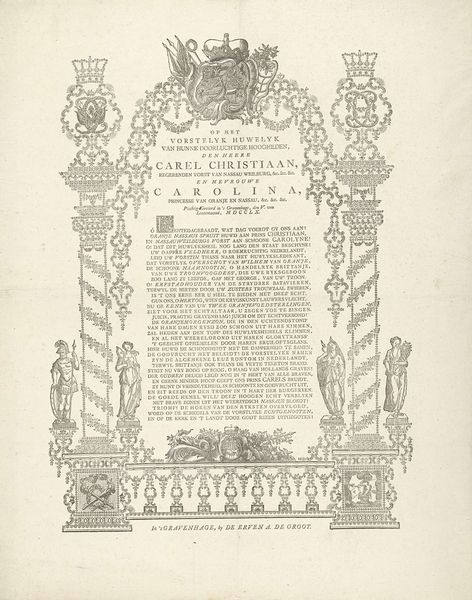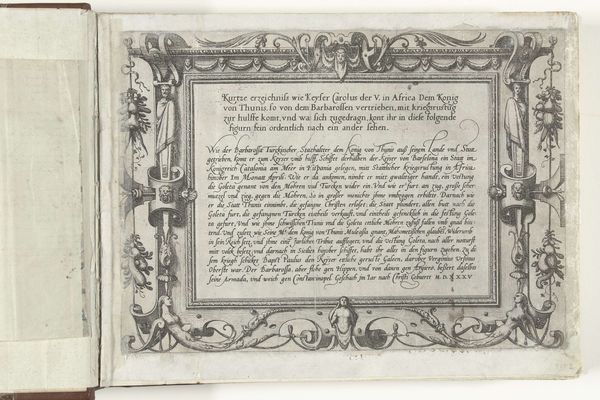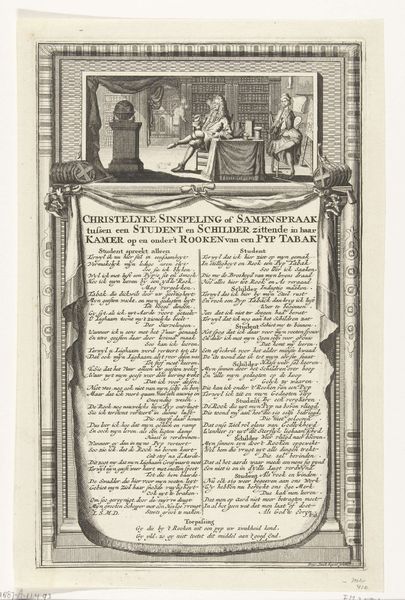
graphic-art, print, engraving
#
graphic-art
#
aged paper
#
page thumbnail
#
baroque
# print
#
old engraving style
#
line
#
pen work
#
history-painting
#
engraving
#
intricate and detailed
#
calligraphy
Dimensions: height 350 mm, width 280 mm
Copyright: Rijks Museum: Open Domain
This print of the Ten Commandments was made by Bernard Picart, a French engraver, around the turn of the 18th century. Its formal presentation connects to broader issues of religious authority and social order in Europe at the time. Picart was a Huguenot, a French Protestant, who fled to the Netherlands to escape religious persecution. In this context, the careful lettering and elaborate framing of the commandments take on a particular significance. They evoke a desire for structure and clarity in a world marked by religious conflict. The visual style is also important. The print imitates the look of ancient inscriptions, lending a sense of timeless authority to the text. This was a common strategy in the early modern period, when religious and political leaders sought to legitimize their power by appealing to the past. To fully understand this print, we might consult historical sources about the Huguenot diaspora, the history of printing, and the relationship between art and religious authority in the 18th century. The image reminds us that art is always embedded in a specific social and institutional context.
Comments
No comments
Be the first to comment and join the conversation on the ultimate creative platform.



